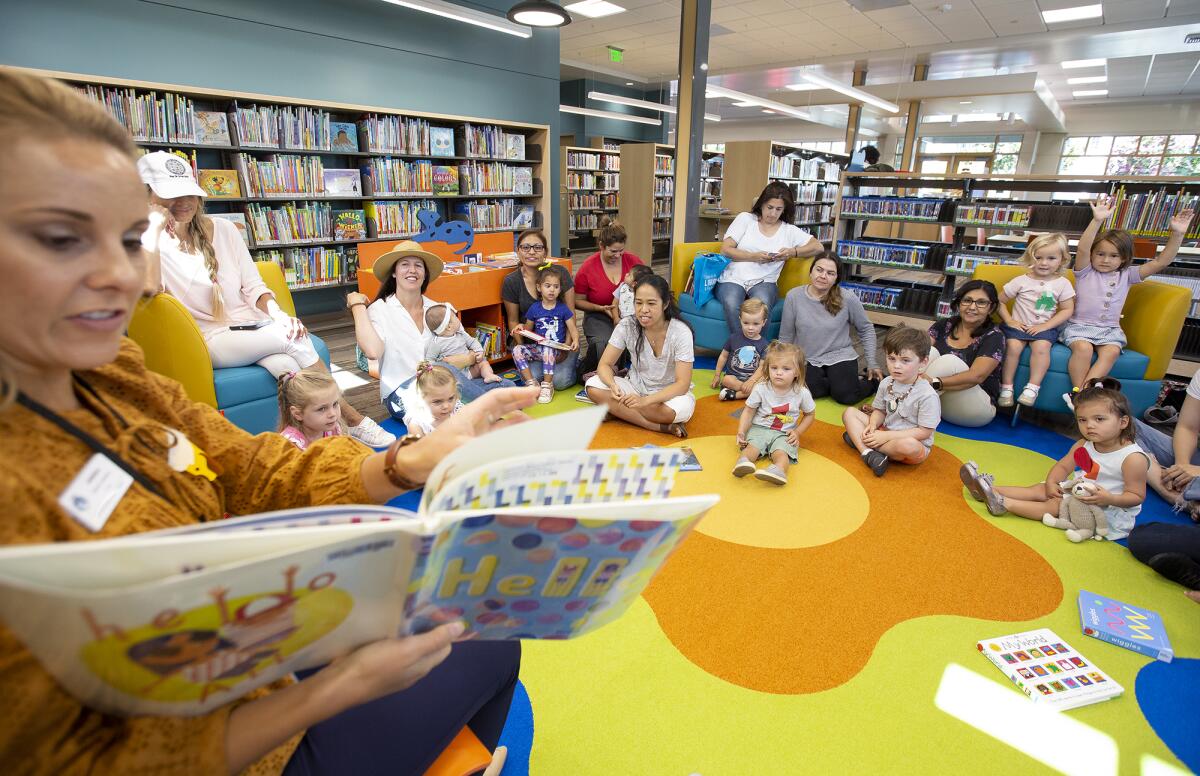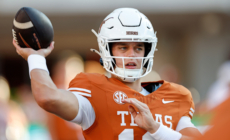-
Central Park Breaks Heat Record as Temperatures Rise in NYC - 17 mins ago
-
Orange County D.A. dismisses gang injunctions against hundreds of people - 33 mins ago
-
Texas Parents Charged With Suffocating 4-Month-Old Baby in a Drawer - 40 mins ago
-
Pride Flags Slashed at Atlanta L.G.B.T.Q. Landmark, Four Arrested - about 1 hour ago
-
Newsom v. Trump judge orders L.A. troop deployment records handed over - about 1 hour ago
-
Steve Spurrier Has Serious Doubts About Texas QB Arch Manning - about 1 hour ago
-
If This Mideast War Is Over, Get Ready for Some Interesting Politics - 2 hours ago
-
Mitch McConnell Says People Worried About Medicaid Cuts Will ‘Get Over It’ - 2 hours ago
-
Palm Springs bomb accomplice suspect dies in federal custody - 2 hours ago
-
Bet365 Bonus Code WEEK365: Claim $150 Bonus For MLB, WNBA Games This Week - 2 hours ago
Why you don’t need to teach your 3-year-old to read
Recently, a friend gave me a hand-me-down kit filled with beautiful wooden games and brightly colored books that promises to teach my child to read. The phonics-based program, the company says, can be used as soon as a young child starts showing interest in books and telling stories, notices letters and words around them, knows how to hold a book, and understands that you read from left to right.
That certainly describes my younger son, who just turned 3 and loves pretending to read picture books alongside his 6-year-old brother, who learned to read in kindergarten. But the set has been gathering dust in a cabinet for weeks.
California’s dismal reading scores point to the need to bolster doing early literacy. But at 3, my son still wears diapers and has the soft cheeks of babyhood. Is he really ready to learn how to read? What is the “right” age to start, and how young is too young?
Before starting in on the reading lessons with my little guy, I decided to check in with a few literacy experts.
Spoiler alert: Most told me to wait.
“Can a child learn individual letters at 2½ or 3? Sure. But is it developmentally appropriate? Absolutely not,” said Susan Neuman, a professor of childhood and literacy education at New York University.
At age 3, she said, children learn language best through play and the back-and-forth with caregivers who talk, read and sing to them. Parents might read nursery rhymes, a powerful tool that teaches children rhymes they remember throughout their lives, she said. They might sing songs like the “Hokey Pokey” and “Itsy Bitsy Spider,” which get children ready to hear and recognize the sounds of our language.
“That’s really essential. Oral language is the foundation of early literacy, and that’s what we need to do at 3 or 4.”

A branch librarian at the Corona del Mar library reads during storytime in 2019.
(Scott Smeltzer / Daily Pilot)
Research suggests these oral skills may actually prove more valuable than learning to read early: Children who learn their letters early may be more “school ready” in kindergarten, but that benefit fades quickly as other children catch up. A strong vocabulary in the early years, however, predicts school readiness in the fourth grade, Neuman said.
When is the “right age” for children to learn to read?
We’ve all heard of the precocious children who learn to read on their own as early as age 2 or 3, but they are the outliers representing about 1% of children, said Neuman.
For the vast majority of children, research suggests that ages 5 to 7 are the prime time to teach reading, said Maryanne Wolf, director of the Center for Dyslexia, Diverse Learners and Social Justice at UCLA.
-
Share via
Reading words off a page is a complex activity that requires the brain to put together multiple areas responsible for different aspects of language and thought. It requires a level of physical brain development called mylenation — the growth of fatty sheaths that wrap around nerve cells, insulating them and allowing information to travel more quickly and efficiently through the brain. This process hasn’t developed sufficiently until between 5 and 7 years old, and some boys tend to develop the ability later than girls.
“I even think that it’s really wrong for parents to ever try to push reading before 5,” because it is “forcing connections that don’t need to be forced,” said Wolf. Parents who try to teach their children to decode words at 3 or 4 may end up turning their kids off from reading instead. Children who are drilled in flash cards and letter decoding may also miss out on the more essential moments of play, exploration and language.
“Waiting doesn’t hurt, but there is a risk that pushing will,” Wolf said.
In European countries such as Finland and Denmark that wait to teach reading until age 6 or 7 and focus instead on play and exploration, children tend to be more proficient readers and fewer struggle, said Wolf. If she had a magic wand, Wolf said she would require all schools in the U.S. to wait until at least age 6.
“It wouldn’t work. The United States has a rapacious appetite for pushing kids. But I can at least make sure a child is given their sweet time in kindergarten,” she said.
But there are also experts who say letter sounds should be taught to 3-year-olds in preschool. “Children at age 3 are very capable,” said Theresa Roberts, a former Sacramento State child development professor who researches early childhood reading.
And it doesn’t have to be a chore, she said. Her research found that 3- and 4-year-olds were “highly engaged” during 15-minute phonics lessons, and they were better prepared in kindergarten. They still had plenty of time to play and expand their vocabulary during the rest of the day, she added.

Maureen Palacios, owner of Once Upon a Time bookstore, reads to children in 2024.
(Jason Armond / Los Angeles Times)
As for my son and the reading set, Roberts told me to “Give him a go! Observe and see what happens.”
What’s the best way for parents to get young children ready to read?
Early literacy is key to helping children learn to read, but it “doesn’t look like what older people might think,” said Neuman.
The skills that prepare a child to read begin developing in utero, as a baby listens to the familiar voices around them and begins to develop connections between sounds and the meanings of words in their home language. After birth, a baby is immediately immersed in a sea of words and rhythm, as their caregivers coo over them, chatter and sing lullabies.
Parents should start reading to a baby early and often, beginning with soft cloth and board books.
“Reading really begins under the crook of an arm on a beloved lap,” said Wolf, who recommends parents develop a nightly reading ritual with their babies and surround them with letters and books to provide a linguistic-rich environment.
When a parent reads a toddler a book such as “Pat the Bunny” and points out, “Oh, this is a bunny, bunnies have fur, pat the fur — that’s all early literacy,” said Linda Espinosa, a professor of education at the University of Missouri and co-chair of the committee who wrote a recent report on preschool curriculum for the National Academies of Sciences, Engineering and Medicine.
Singing the ABC’s with them, teaching colors, and letting them play with magnetic letters on the fridge also promote vocabulary and oral language development, which are foundations for early literacy.
It is also about letting toddlers tumble, explore and play.
“When we talk about early literacy, we don’t usually think about physical development, but it’s one of the key components,” said Stacy Benge, author of “The Whole Child Alphabet: How Young Children Actually Develop Literacy.” Crawling, reaching across the floor to grab a block, and even developing a sense of balance are all key to reading and writing, she said.
“In preschool we rob them of those experiences in favor of direct instructions,” said Benge. “There’s a lot of money to be made in our worry about our children being behind.”
Some children may become interested in the letters in their name, and want to copy them down or point out words that start with the same sound. And many will enter kindergarten already knowing some letters and sounds. But parents don’t need to push too hard.
“I’d say parents, relax, talk to your child, engage them in extended conversations, read to them, take them places,” like the bank and grocery store, and tell them the names of the things around them, said Neuman.
And as for that reading kit in my cabinet: “Wouldn’t you rather just read to him and convey a love of reading to him? It really just depends on how you want to spend your time,” said Neuman. “I’d say don’t bother. Do something fun.”
Source link


















